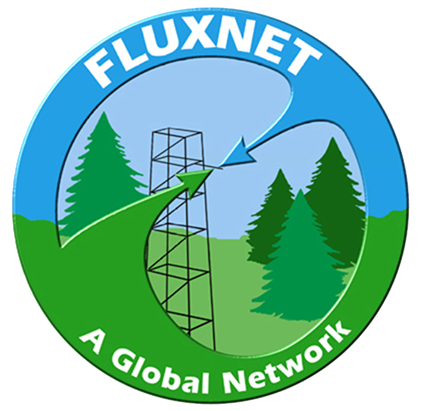David Miller, recipient of the 2024 Secondment Program award, has completed the program and wrote the following to share with the FLUXNET community:
FLUXNET Secondment 2024 blog post
David Miller
Happy summer! How fortuitous to be writing this during a heat wave. Back in the depths of January, I had the generous opportunity to visit Switzerland on a FLUXNET Secondment travel scholarship. I was hosted by Dr. Sebastian Wolf at ETH Zurich in the Institute of Terrestrial Ecosystems (ITES), within the Department of Environmental Systems Science. I was also hosted by the Prof. James Kirchner and his lab group (Physics of Environmental Systems), with opportunities for close collaboration with the lab group of Prof. Andrea Carminati (Physics of Soils and Terrestrial Ecosystems).
During my visit, I was focused on sharing ideas for research on water use efficiency (WUE), which is the ratio of gross primary productivity to evapotranspiration (or what I’ve described to friends as ‘a plant’s gas mileage’). This was following on a prior study that I had been working on during my postdoc with Prof. Trevor Keenan at UC Berkeley, showing how energy-limited ecosystems quite often increase productivity during spring droughts (Miller et al., 2023, https://doi.org/10.1038/s41467-023-43430-9), which is not well-represented from a modeling perspective. To me, a natural continuation of this research was to look at how WUE changes during drought conditions in places that are water-limited vs. energy-limited; essentially, what happens to ecosystem WUE during a drought?
Over the weeks Sebastian and I shared an office, we thought through ongoing research ideas related to how productivity, water, and drought interact, thinking about his eddy covariance sites in the Sierra Nevada (Wolf et al., 2024, https://doi.org/10.1016/j.agrformet.2023.109864), larger scale analyses across the flux network, and new studies and his (then) upcoming presentation for EGU. For example, one big question we still need to work on: what is the best way to find situations where evapotranspiration is almost all transpiration?
I had the opportunity to present and meet with many researchers at ETH Zurich, and Sebastian was fantastic in facilitating me going to lots of talks, group meetings, coffee mixers… basically any situation where I could get into a casual conversation about cool science. And he made sure I ate well too, through many of the good lunch places near the university and especially at the New Year’s Apero of the department and the dinner after the ITES General Assembly. I went to job talks for a very thematically wide-ranging faculty search, saw applied forestry research seminars (I did my best to follow along in German for one of them), a PhD defense (congrats to Dr. Francesco Giardina, and great research on ET and photosynthesis!), and generally felt fully ensconced in the social aspects of academia at ETH.
In ITES, Prof. Kirchner gave me an amazing office hours-like session on error propagation and how to apply it WUE – I have a much, much better sense about to characterize the variability of WUE and how to take the mean and standard deviation of WUE the right way in the future. I met with several researchers in Prof. Kirchner’s group, including Harsh Beria, and we compared notes on water vs. energy limitations over elevation gradients and thinking about modeling and remote sensing datasets of GPP.
I presented my recent research to Prof. Carminati’s group, and got a lot of wonderful feedback on how water moves through ecosystems and some of the ways to think about drought (and I appreciate soil-root interactions a lot more now). I met with postdoc Fabian Wankmuller and grad student Julian Schoch on GPP work they’ve been doing, and about a major paper that is in review (look for it soon!). Prof. Carminati was great to spend lunch with both Sebastian and me, and I received lots of insight on career, research thoughts, and also Chinotto lemonade.
I toured the Chamau grassland pasture flux site (CH-Cha), hosted by Yi Wang, a grad student in Prof. Nina Buchmann’s research group. Even though it was January, the site was very green. It had recently been grazed by sheep, leading to low leaf area. Snowy mountains were visible in the distance and it was muddy and cool, but the grass was growing well. I had expected productivity to be essentially zero during the winter, but it was consistently above freezing and the pasture looked like early spring to me, and so perhaps it would be unsurprising to have some amount of GPP even this early in the year. (And thank you Yi for the mud boots!)
I was also able to present and meet with researchers at the University of Bern and the Swiss Federal Institute for Forest, Snow, and Landscape Research, more commonly referred to as WSL.
At Bern, I was hosted by Prof. Benjamin Stocker in the Department of Geography, and met with his postdocs and grad students and learned about many of the research projects they’re working on as well, from drones to satellites to dendrochronology to ecosystem models to isotopes and much more. I received lots of good feedback on my drought and WUE presentation, with several ideas that got me thinking about other ways of characterizing droughts and what is the ‘peak’ of the growing season for different climates. It was great to receive new insight into things I thought I already understood, like why there is a square root over VPD for underlying WUE (or whatever one might prefer to call the VPD-scaled version of WUE).
At WSL, I was hosted by Dr. Eugenie Paul-Limoges and the Ecosystem Ecology research group headed by Dr. Arthur Gessler. I presented to their research group about my recent publication on spring drought, and shared preliminary ideas for the WUE research study. I was grateful to be so well-received and get many new ideas about how different aspects of drought could be addressed. I learned about ongoing research at WSL, including the VPDrought experiment, which manipulates atmospheric humidity in a mature forest. I also received more ideas about tree growth patterns, dendrochronology, and other drought manipulation research studies.
I was strongly encouraged by my host Sebastian to take advantage of the excellent Swiss public transport system and use my weekends to travel. I had written a lot about high alpine ecosystems in a temperature and aridity gradient context, but exploring Switzerland by train was a phenomenal way to fully appreciate the climatological extremes for such a small country. (It also helped I found a cool 3D relief postcard at a bookshop in Zurich, of which I sent several back to the US.) I took day trips from Zurich up to higher locales in the Swiss Alps at Zermatt and at Jungfraujoch, which really emphasized to me the intensity of the climate gradient as elevation increases, but different from the dry to wetter gradient that I was used to in California. There is really no similar combination of elevation and moist temperate climate like the Alps in the United States (to friends and family back home, I’ve described it as, “It’s like you put the Sierras in Wisconsin.”). I also took a day trip to the canton (i.e. province or state) of Ticino in the south of Switzerland, where all of a sudden weather becomes much warmer and it’s a Mediterranean climate – oh, and everyone is now speaking Italian. Switzerland is a fascinating place linguistically, and I got used to hearing and seeing things in multiple languages, even if I still can’t really speak German (or French or Italian!). And once Sebastian discovered that I knew how to ski from growing up in New Hampshire, he outfitted me accordingly and he took me on a family weekend trip to Malbun in Liechtenstein (a tiny country I never expected to go to!) and to Flumserberg, a big mountain a couple hours south of Zurich. I hadn’t skied in probably a decade, but it really is like riding a bike – it came right back and he was teaching me to carve on the second day out.
I met with many, many more people than I could possibly list here – I am truly grateful for everyone being so generous with their time and ideas with me, and I learned an immense amount for being in Switzerland a quick three weeks. Thank you Sebastian for encouraging me to apply to the FLUXNET Secondment and being such a wonderful host!
—
This FLUXNET Secondment was during my last month as a postdoc with Prof. Trevor Keenan at UC Berkeley, in the Department of Environmental Science, Policy, and Management. As of February 2024, I have since moved across the country and have been a postdoc with Prof. Dan Katz at Cornell University, in the School of Integrative Plant Science. For more info about me, feel free to check out my personal website here: https://www.davidlmilleretal.com
—
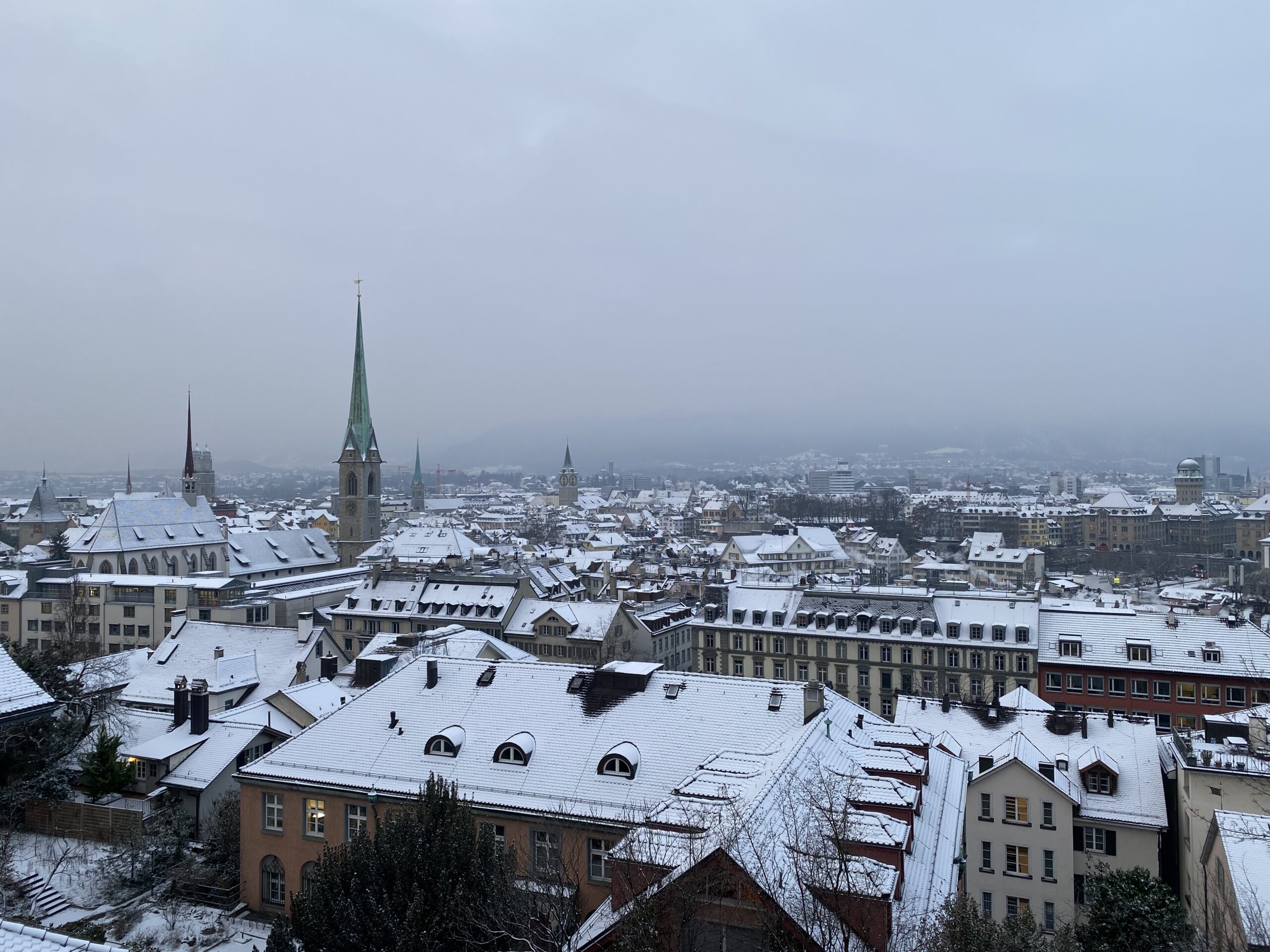
Snow in Zurich during my first week!
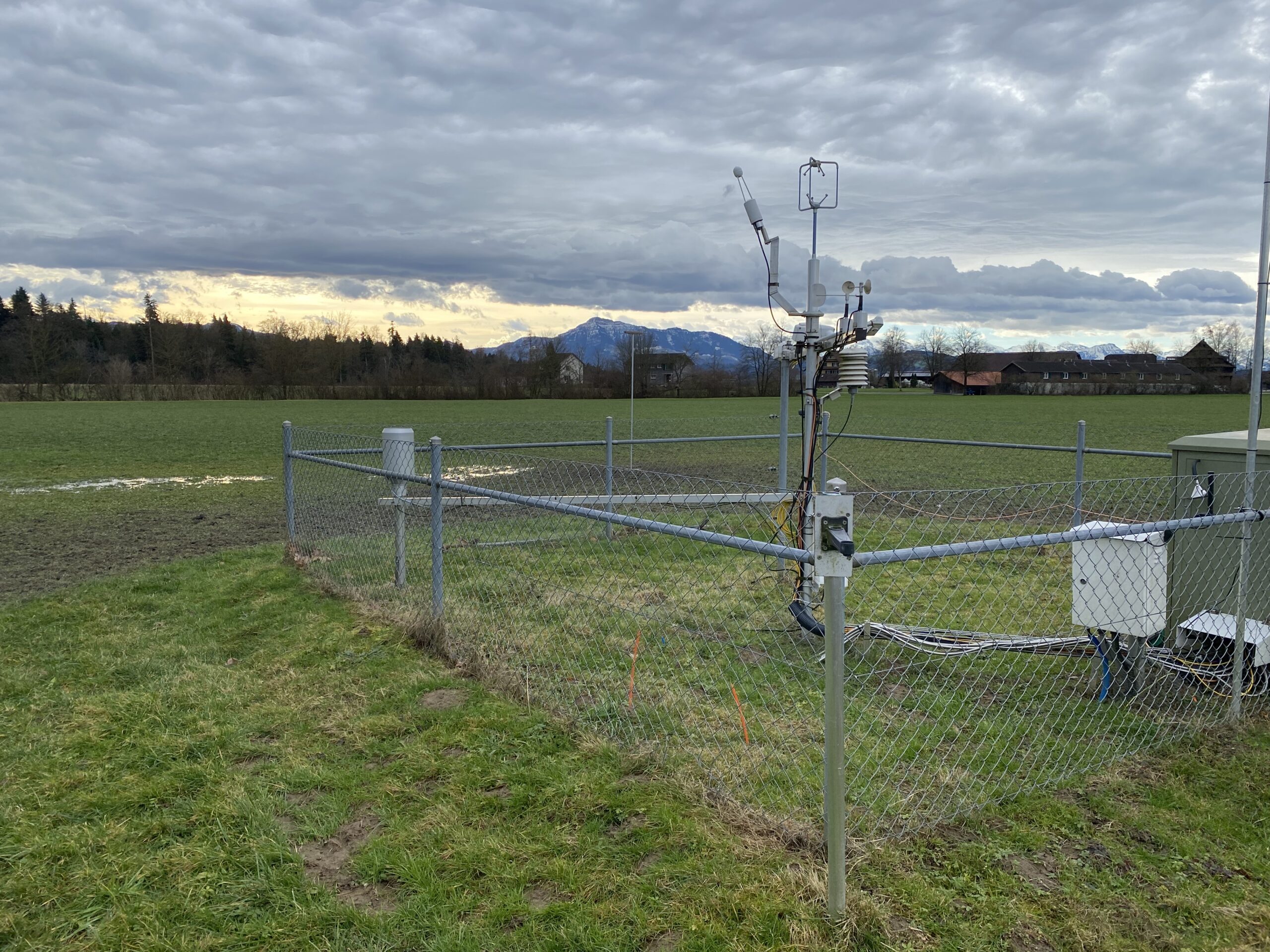
It was very green at the grassland pasture flux site at Chamau (CH-Cha).
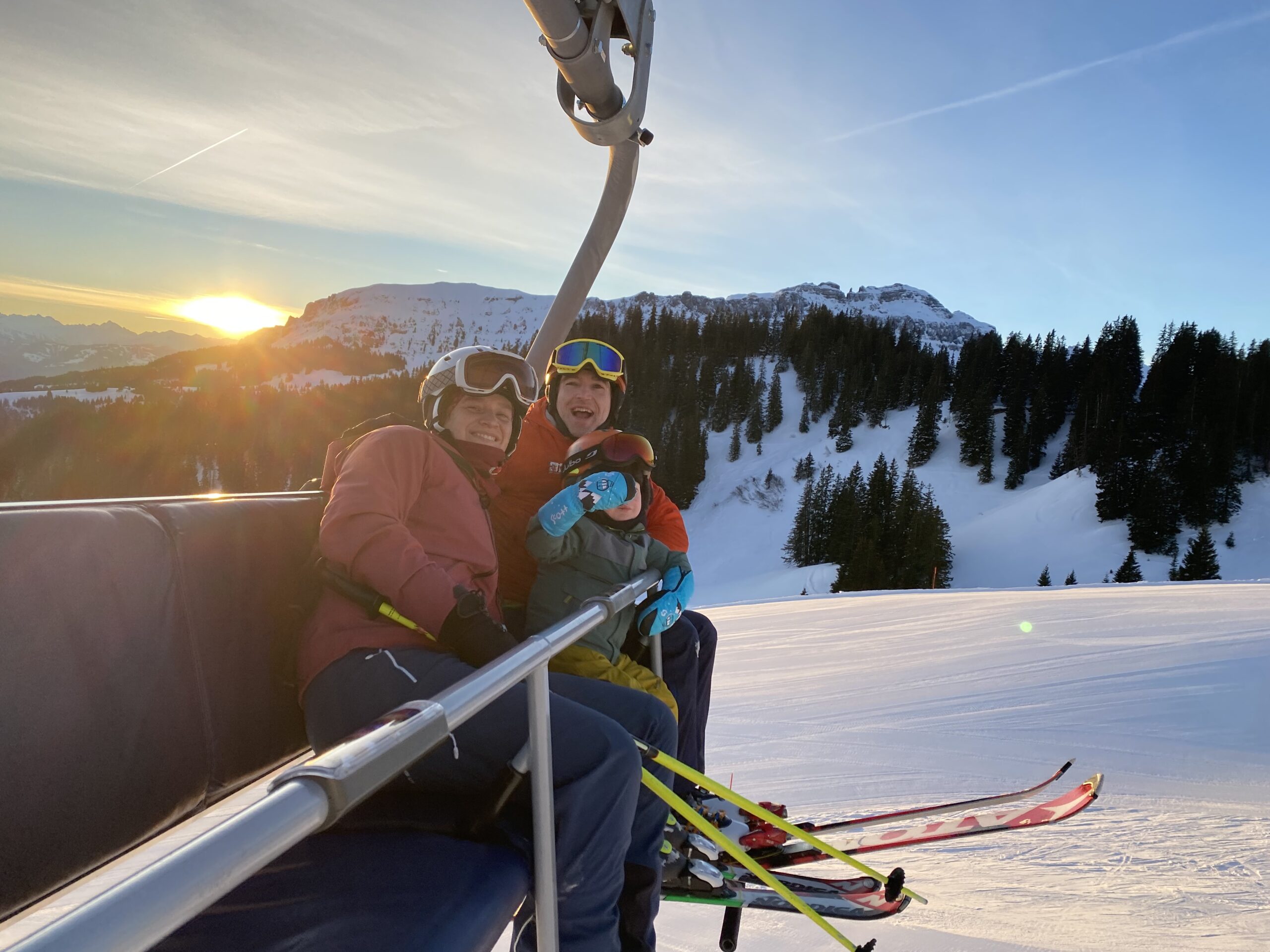
We went skiing! Sebastian, Eugenie, and Milo showing off his cool mittens.
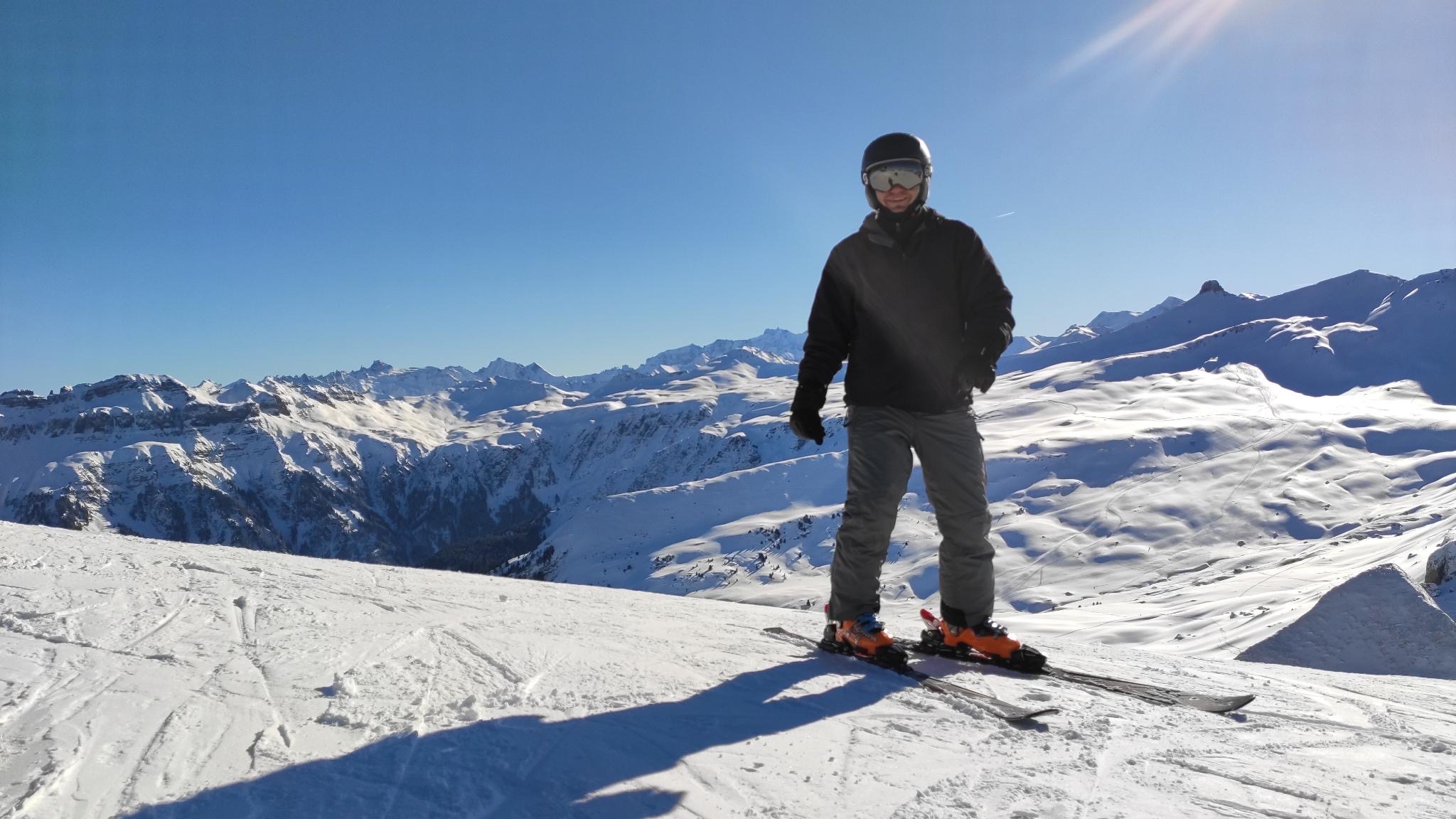
Proof that I had a good time on my trip – Flumserberg was a great spot. Thanks Sebastian for the pic. 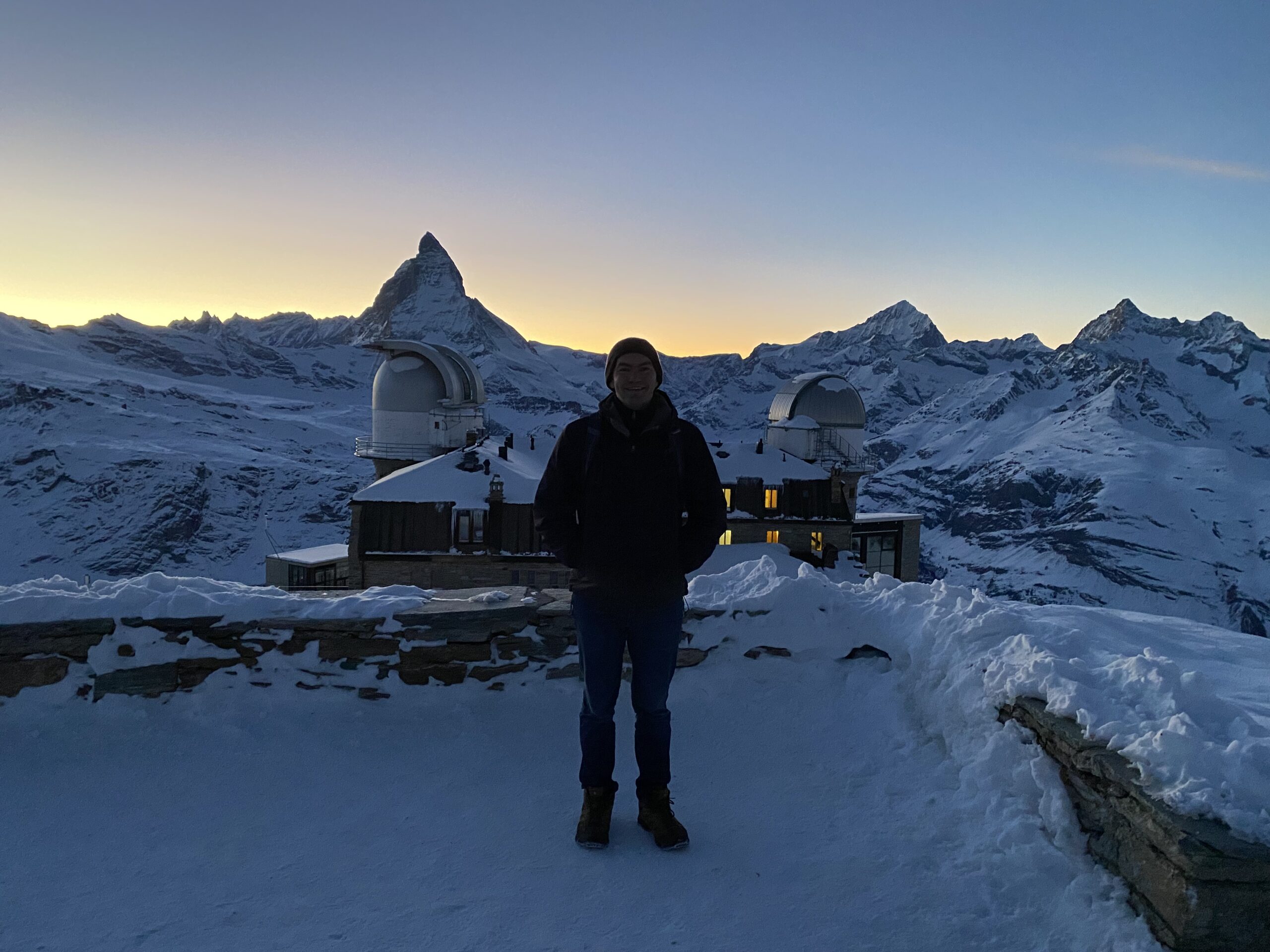
High up in the Alps at Zermatt, with a very recognizable mountain behind me.
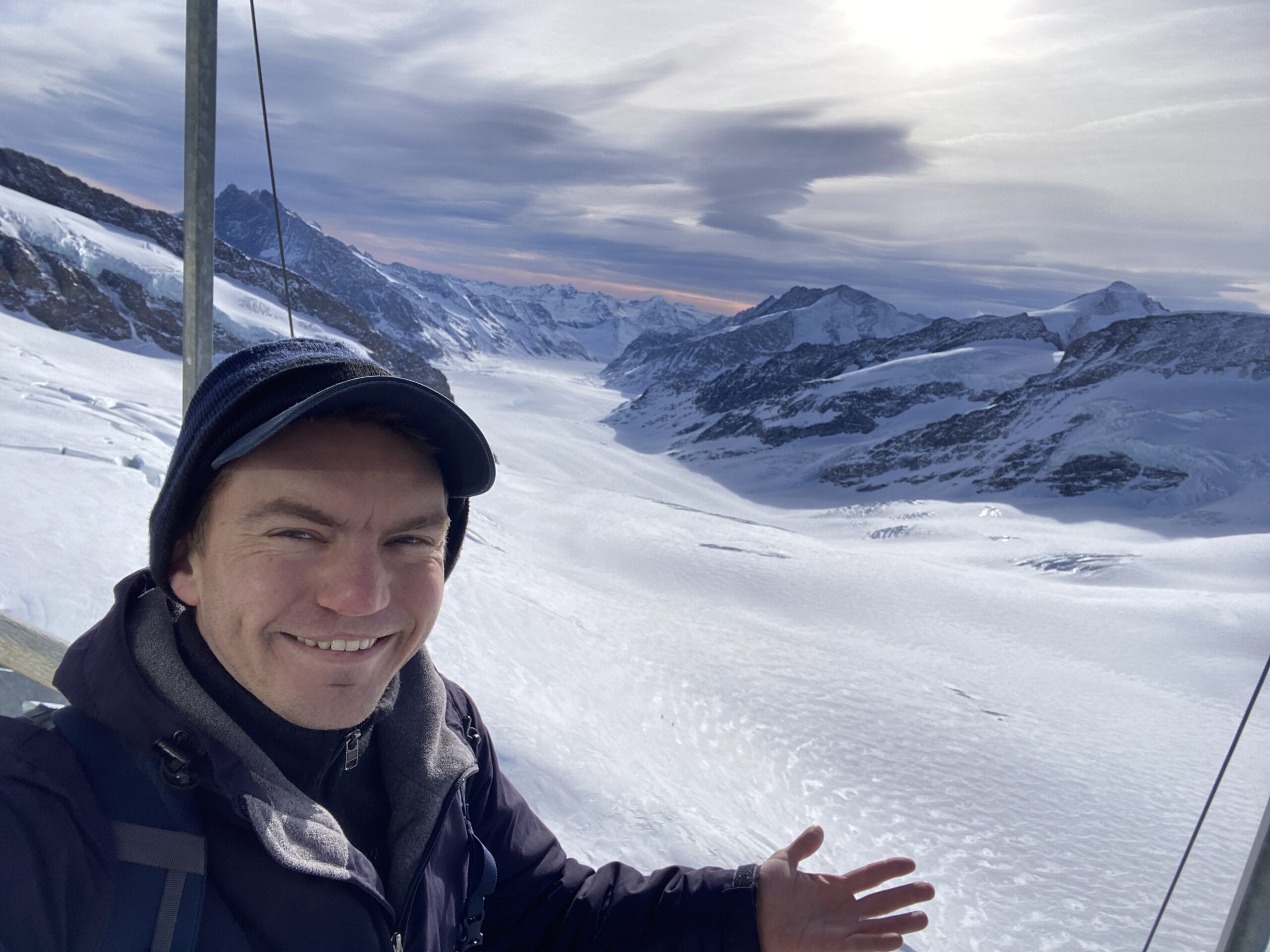
Continuing my tour of cold snowy places at Jungfraujoch.
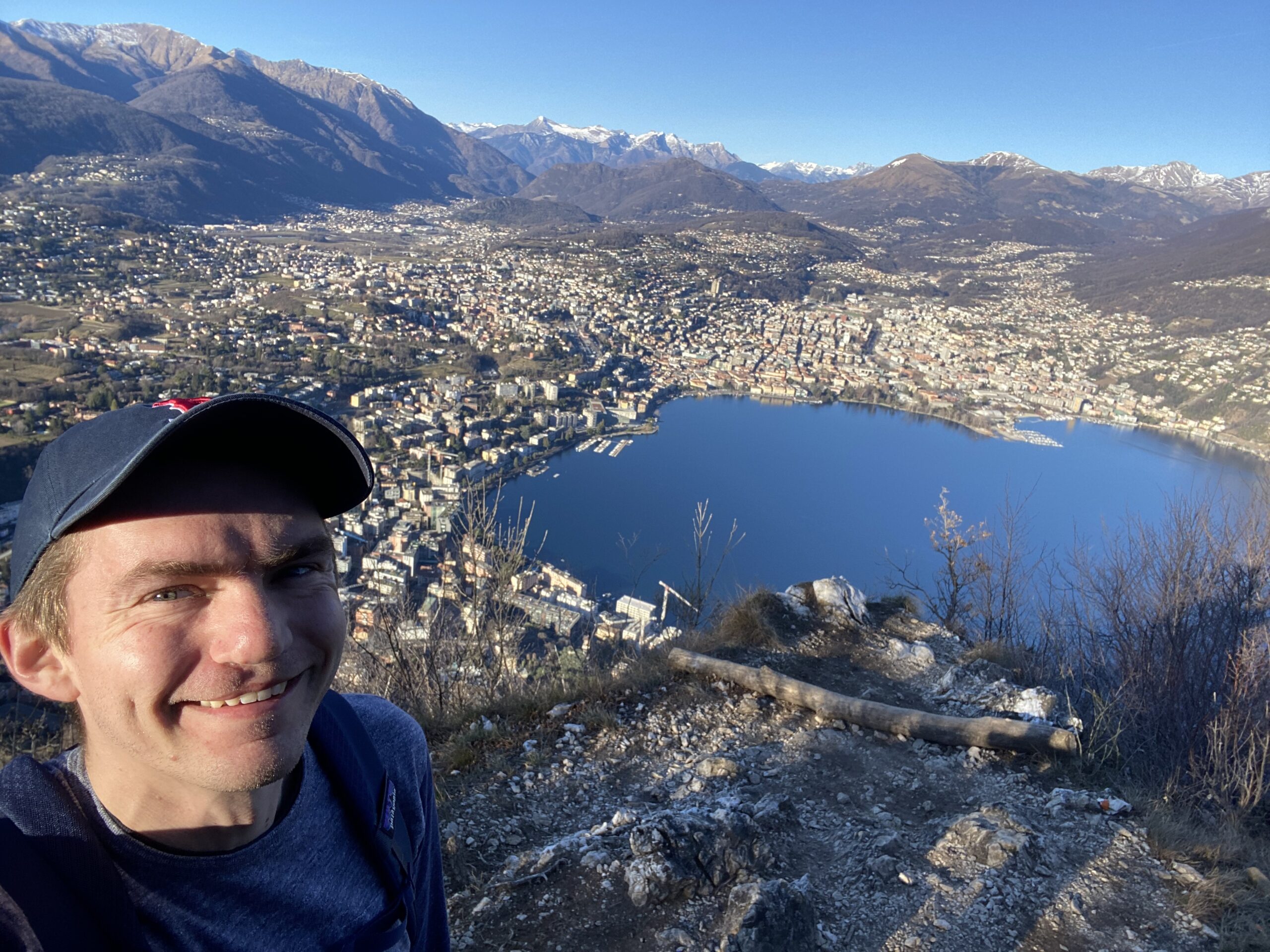
And warmer places too! Had a great day in Ticino, visited Bellinzona and Lugano (pictured). 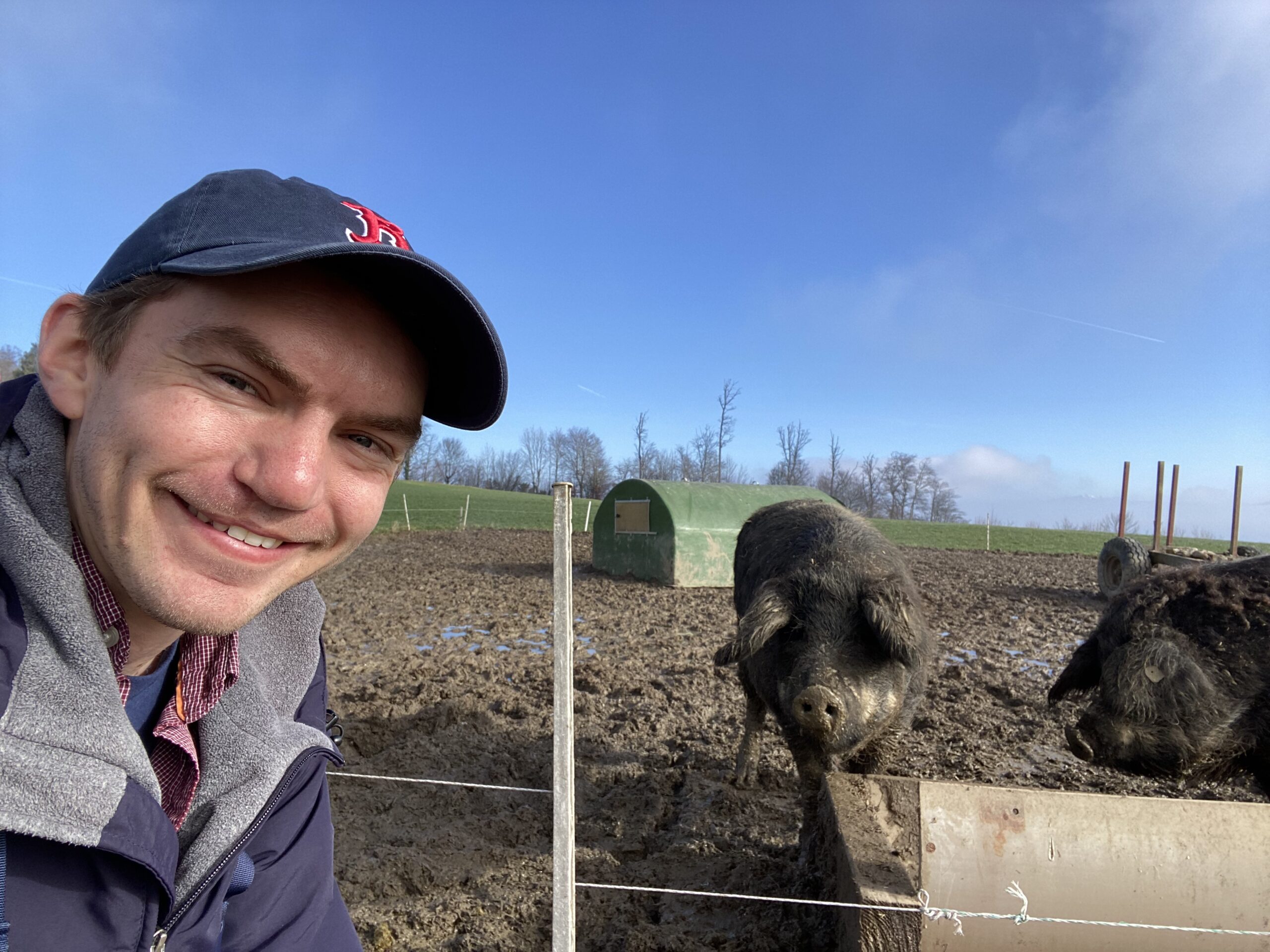
Also had a good time touring around Zurich. Me meeting some of the local schwein at the Uetliberg.

I visited the Kunsthaus Zurich art museum during my first weekend while recovering from jet lag, and I came across one of the most amazingly detailed paintings of a forest I’ve ever seen. I bought the poster. Eichenwald (Oak Forest) by Robert Zund.
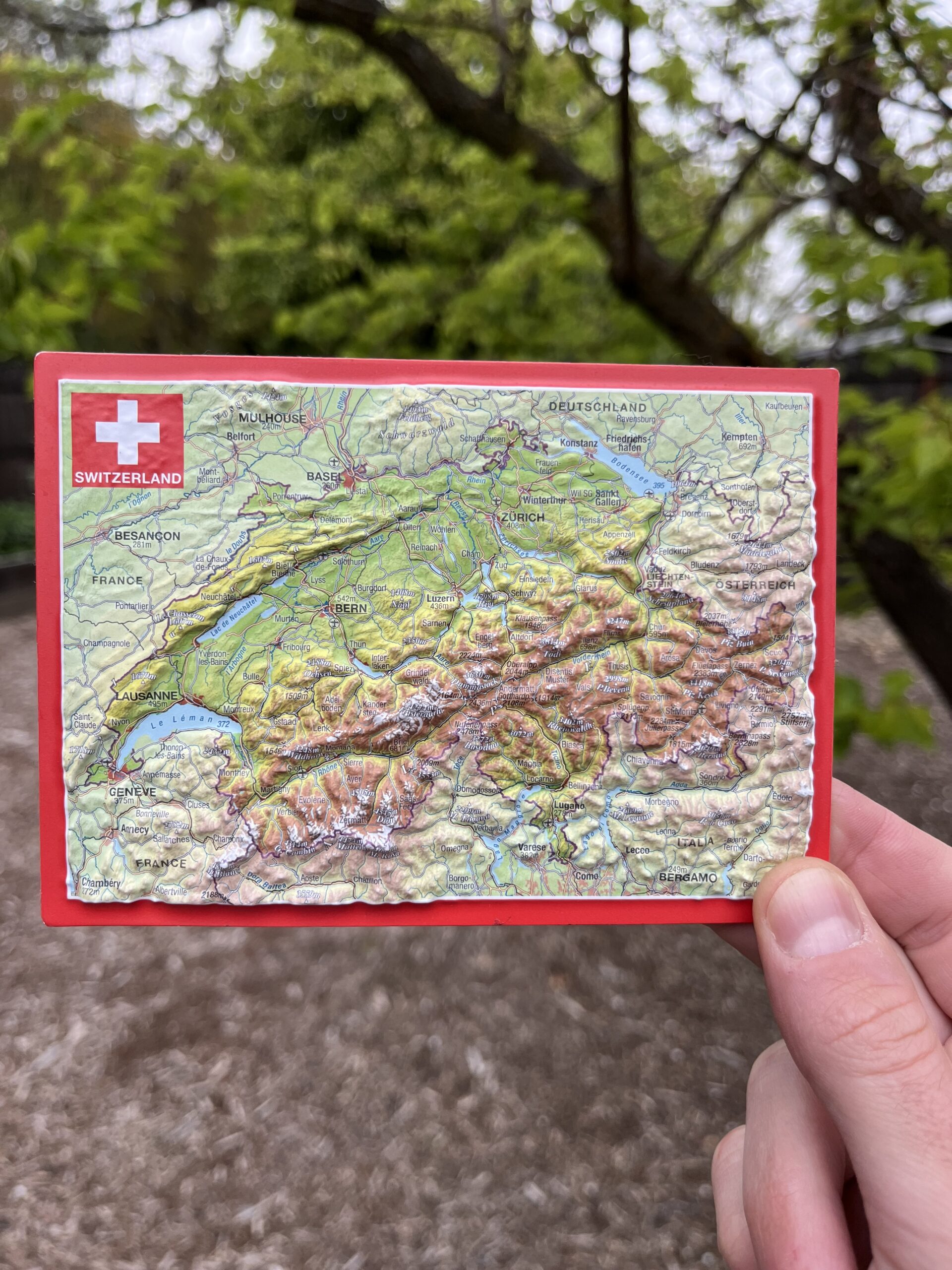
3D relief postcard of Switzerland I sent back to friends in the US. Many thanks to Matt Roby for the photo!
